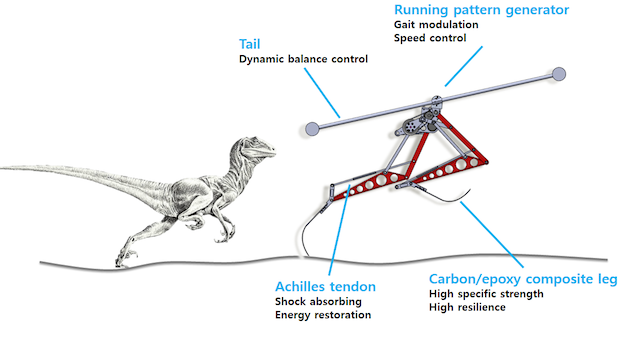Korea's Dinosaur Robot Outruns Usain Bolt

Scientists from the Korea Advanced Institute of Science and Technology (KAIST) have built a fast-running biped robot that can reach a top speed of 46 km/hour (28.6mph) on a treadmill.
Inspired by the velociraptor – the predatory dinosaur which lived 75 million years ago, and was made infamous by Jurassic Park – the scientists decided to build a sprinting robot with two legs and a mechanism that works as a tail.
While Raptor is not as fast as Boston Dynamics' Cheetah, the world's reigning fastest legged robot, which has a top speed of 47 km/hr, the new Korean robot can beat Olympic sprinter Usain Bolt, the fastest human ever whose top speed is estimated to be 43.92 km/hr.
The two robots are also very different in the way they have been built.
Cheetah is a four-legged quadroped robot powered by hydraulic actuators and is heavy, but the Raptor only has two legs, which are made from lightweight composite material, and it weighs just 3kg.
The Raptor also has a 'tail' – a spinning rod – that keeps its body stable as it navigates around and over obstacles, according to Jongwon Park, a PhD student at KAIST's Mechatronics, Systems, and Control Laboratory.

In the video above, you can see how the robot is able to hop over obstacles of differing heights without tripping over.
Although other robots, such as MIT's Cheetah, also use a tail for stabilisation, the Raptor is the first to uses a tail to help it maneuver over and avoid obstacles.
At the moment, these robots can only run on treadmills, supported by a bar, but Boston Dynamics (which Google acquired in December) says that it is developing the WildCat: a new version of the Cheetah which will be able to run outdoors.
It hopes the WildCat will be completed next year.
© Copyright IBTimes 2025. All rights reserved.






















